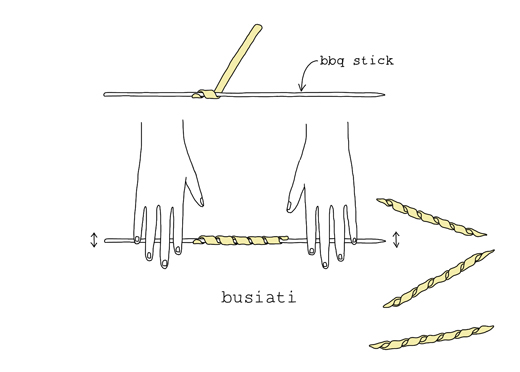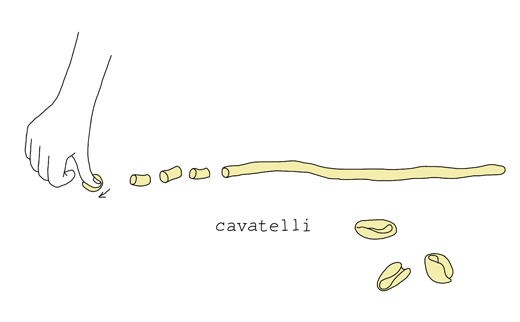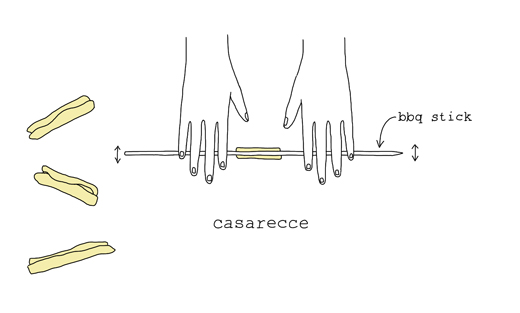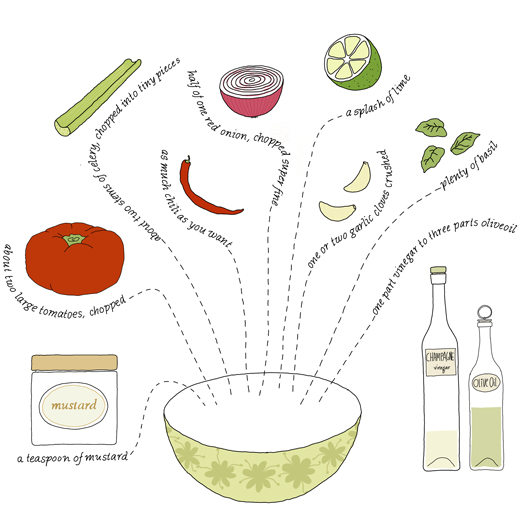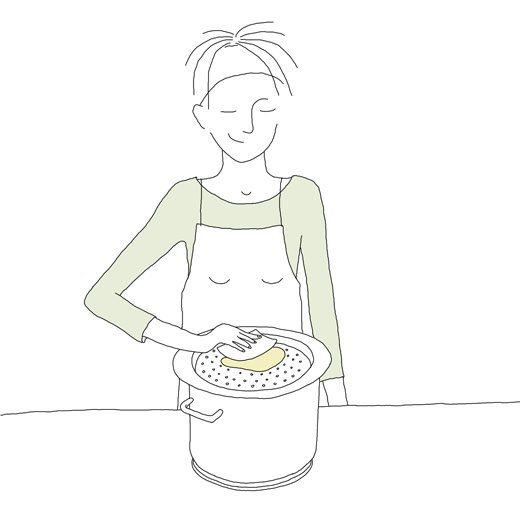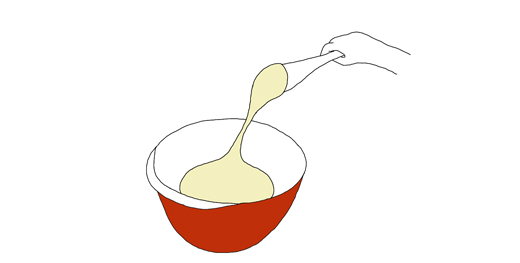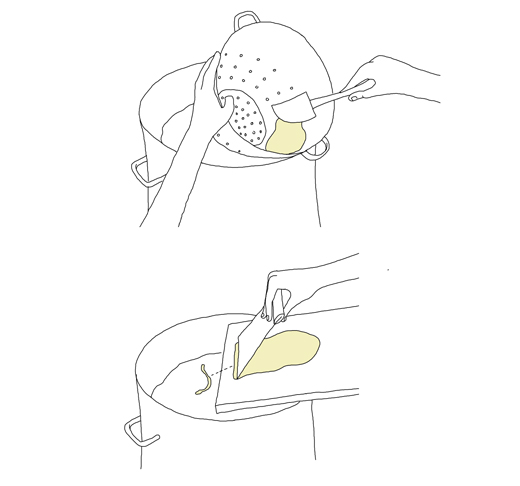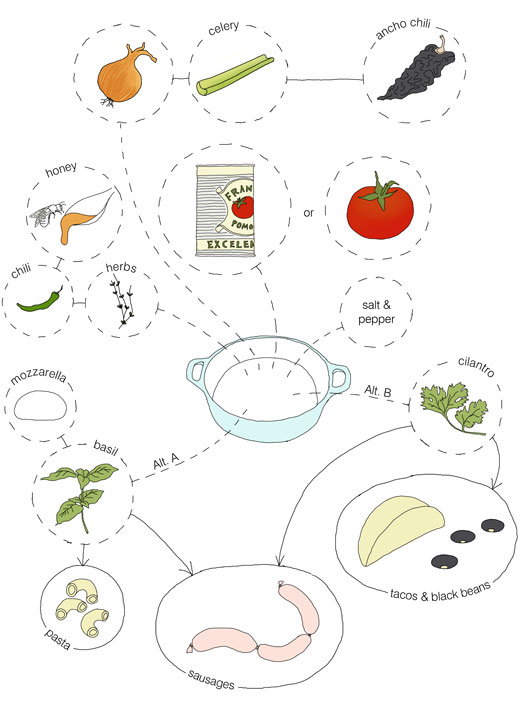
One small reason I draw my food is that my cooking results will probably never look as good as Stephane Lemagnen’s creations. It’s silly of me to compare (and I’m not really trying), as Stephane happens to be a well trained chef. On his site Zen Can Cook he shows mouth watering examples of his ability. If you visit the site you’ll also notice that his photography skills aren’t bad either. His cooking and recipes are creative and a great inspiration for many other cooks all over the world. Even if his creations look complicated most of the recipes are easy to follow and can be cooked in a regularly equipped kitchen like mine. My aquavit pork buns were created based on Stephane’s way to cure pork belly.
Stephane grew up in Gascony, France and trained as a cook in the Pays Basque and Paris. In 2006 he opened the avant-garde dessert bar, Room 4 Dessert here in New York City where he offered modern cuisine in the form of a dessert tasting menu. Today, Stephane works as a full time private chef for a well known (secret) client. Lucky them! Recently Stephane started Zenspotting, a space for chefs and serious amateur cooks to publish their photos with links to interesting recipes. I’m flattered to be part of it.
Stephane and I met through twitter two years ago. Ever since then we have had great and inspiring exchanges by email or tweets. I’m happy to host Stephane and I’m really happy how this simple cheese ravioli turned out. Enjoy.

Four-Cheese Ravioli with Tomato Sauce
by Stephane Lemagnen
I’m thrilled to see one of my recipes come to life through Johanna’s illustrations. I have admired her work for a numbers of years now and always loved her recipes and her artistic way of explaining how things are done. And it’s even better with a glass of aquavit! Kokblog is clever, delicious and visually pleasing and it made me wish I stuck with those art classes in 5th grade.
Ravioli are also clever and delicious little morsels of happiness, and for me they are at their best when left simple. An oozy, cheesy filling in a soft envelop of pasta with a tomato sauce flavored with hints of fresh basil is often all you need to put a smile on people’s face. And it’s as easy as… the illustrations. Drawing, in fact, is much harder than ravioli-making and eating them is definitely easier than both. They can be enjoyed right away, or made in batches and frozen for future use which makes them great little discoveries to be made in your freezer.
for the pasta dough
3 cups all-purpose or “00″ flour, plus more for dusting work surface
1/2 teaspoon salt
4 whole eggs
4 yolks
2 tablespoons olive oil
for the cheese filling
8 ounces ricotta (drained)
4 ounces Montasio cheese (grated)
4 ounces Gorgonzola (crumbled)
4 ounces Italian Fontina cheese (grated)
1 egg
½ cup basil leaves, chopped
salt and pepper
nutmeg
to finish
Tomato sauce
Basil
for the pasta dough
Combine the flour, the salt, the eggs, yolks and olive oil in a Kitchenaid bowl and combine on low speed using the dough hook (this also could be done by hand in a large bowl). Increase the speed until you get a rough dough. This should take 1 or 2 minutes.
When the mixture comes together transfer to a floured clean surface and knead the dough, turning the inside-out, until you obtain a dough that’s smooth on the outside, adding flour every time the dough starts to feel sticky. The whole process should take less than 5 minutes. Wrap the dough in plastic wrap and let it rest in the refrigerator for at least 2 hours, or overnight.
Take the dough out from the fridge and place it on a floured surface. Cut it in 4 equal pieces. With a rolling pin make rectangle with the pieces of dough, so that they fit inside the pasta machine. Start rolling pasta sheets on the thickest setting and cut in half (so it doesn’t get too long). Keep rolling reducing the setting every time.
You should be able to see your hand through the pasta sheets when you have reached the right thickness. You want it thin but not so thin that it becomes fragile.
Make an egg wash by beating an egg with a tablespoon of water. Cut sheets of pasta so they have about the same length and lay them on a floured surface.
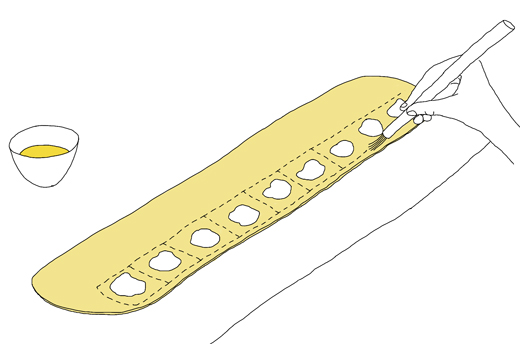
Pipe little mounds of stuffing on the pasta sheets. Brush the edges and the middle sections with egg wash. Cover with another sheet of pasta. Seal with your fingers and push out any air pockets. Use the back of a pastry cutter the size of the mounds to seal each ravioli. Now use a pasta cutter or pastry cutter to portion the raviolis. Reserve on a single layer on a tray dusted with semolina flour.
for the filling
Combine all the ingredients by hand, or in a food processor. Season to taste. Place in a pastry bag with a round 1/2 inch tip.
to finish
Bring a pot of salted water to a boil. Drop the ravioli in the water and cook until they come back to the surface. About 5 minutes. Drain them and toss with tomato sauce. Garnish with basil.
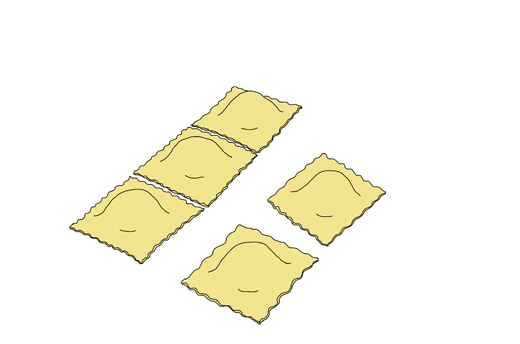
for the tomato sauce
3 tablespoons olive oil
1 small onion, finely chopped
1 clove garlic, finely chopped
1 28 oz. can San Marzano whole peeled tomatoes, including the juice, (or in season 1 3/4 pound of fresh tomatoes, peeled, seeded, and chopped)
2 tablespoons tomato paste
1 large pinch of sugar
1 pinch hot pepper flakes
fresh basil leaves
Heat the olive oil in a saucepan. Add the chopped onion and stir to coat. Reduce the heat to low and let it cook for 15 to 20 minutes, stirring occasionally until soft and translucent. Meanwhile, place the tomatoes in a bowl and crush them with your hands or using a potato masher. Add the garlic to the cooked onions and cook for a minute more. Add the tomatoes, including the juice, a few leaves of basil, the tomato paste and pinch of sugar. Season with salt and pepper and bring to a very low simmer. Cook for 15 to 20 minutes more, stirring occasionally, until it gets thicker. Remove from the heat, if you want you can blend the sauce for a few seconds for a smooth consistency.
…
Here are some other Ravioli recipes by Stephane:
Veal Ravioli with Culatello, Radiccio, Chanterelles & Sage
Langoustine Ravioli with Citrus-Coconut Sauce, Thai “Bird’s Eye” Chili & Fava Beans
Five-Herb Ravioli with Chanterelles, Roasted Tomato Coulis and Basil Oil
More ravioli reads on Kokblog, Duck Egg Raviolo
Pasta Shaping Work Shop on kokblog
